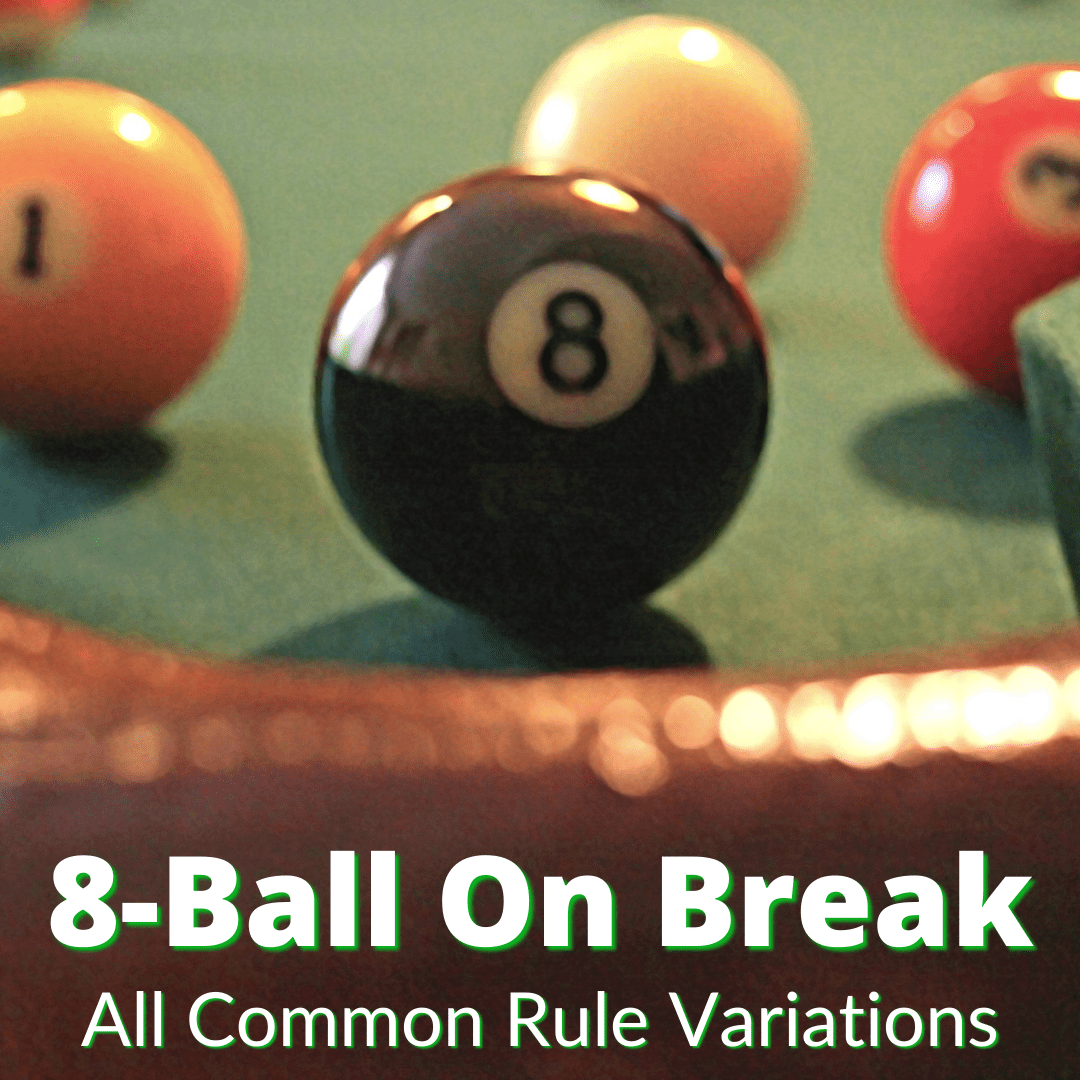 If you’ve played pool, you’ve played 8-Ball.
If you’ve played pool, you’ve played 8-Ball.
It is the most popular and most common variation of the game, at least in the US.
But sometimes it can seem like everyone is laying with a different set of rules.
And that becomes most apparent with the 8-ball on break.
Everyone seems to have a different idea as to what happens when you sink the 8-ball on a break.
There’s a reason for that.
There are a number of different rule variations and one of the biggest differences among them concerns exactly this situation.
Keep reading for a rundown of how the most common rule variations handle the pocketing of the 8-ball on a break.
Table of Contents
Eight-Ball On Break
Before we get into the different sets of rules and their handling of the 8-ball on break, let’s take a brief look at the black ball and its significance in a game of 8-Ball.
Importance Of The 8-Ball
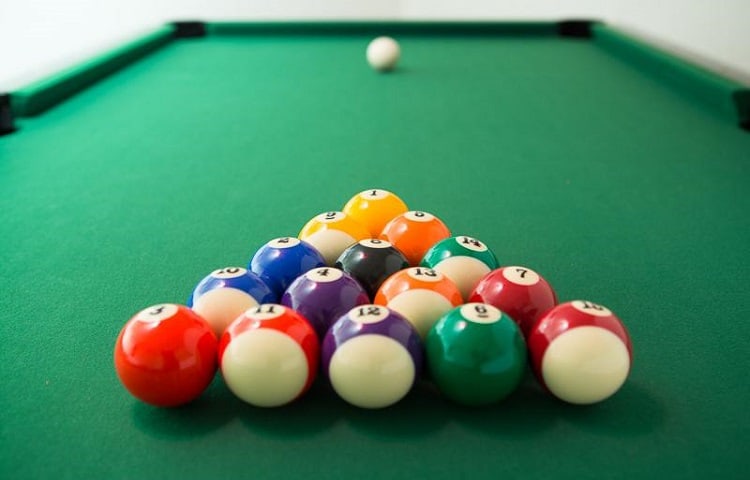
There’s no need to point out that the 8-ball is the most important ball in a game of 8-Ball. It’s in the name and the 8-ball is the last ball you need to pocket, determining the winner of the game.
At the beginning of the game, the 8-ball sits in the middle of the rack. It is surrounded by the solid balls, which are numbered from 1 to 7 and the striped ones, which are numbered from 9 to 15.
So the 8-ball sits in the middle numerically, as well as physically.
The color of the 8 ball is different from all the other balls to further demonstrate its importance. It’s always in black, while other balls are colored in pairs. For example, there are two reds: one solid and one striped.
Although you win the game by putting the black 8-ball in the pocket after all your other balls, you lose if it goes in before other balls.
If the 8-ball goes in on the break, various circumstances may happen. What that means and what comes next depends on the rule variation you follow. Let’s take a look.
Sink 8-Ball On Break: Rule Variations
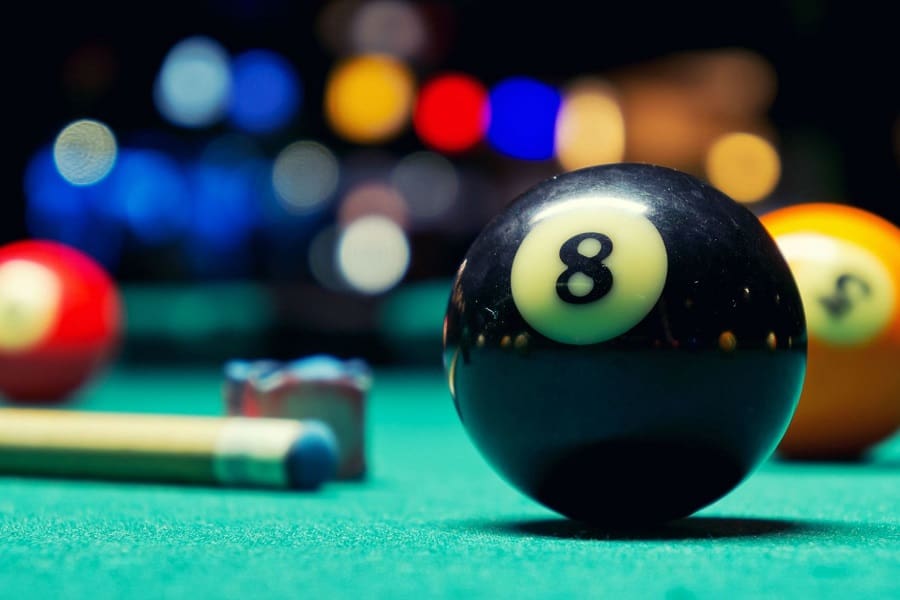
There are a number of different rule variations for the 8-Ball game. The most common ones are the APA, BCA, and Bar Rules.
Each rule variation has a specific determination about what happens when you make the 8-ball on the break.
In most cases, you win the game if you sink the 8-ball on a break. But there are some exceptions and some stipulations.
For example, if you scratch while pocketing the 8-ball on a break, you may lose the game. Let’s take a look at the major rules variations for 8-Ball.
Bar Rules
Bar rules are the most common rules used when playing in bars or billiard halls. In other words, if you’re not playing in a tournament, the rules are almost always bar rules.
Most bars and billiard halls follow the standard 8-Ball rules. In those rules, when you sink the 8-ball on break, you win the game.
Unless you scratch at the same time.
That is the one situations, when playing 8-Ball following bar rules, in which you lose by putting the 8-ball in a pocket on the break.
If you pocket both the 8-ball and the cue ball on a break, you lose. The opponent can ask for a re-rack, or you can put the 8-ball at the head spot and replay the game. It depends on the other player’s choice.
Following the standard bar rules, scratching on break, without pocketing the 8-ball, doesn’t lead to you losing.
In this situation, the opponent places the cue ball behind the 1st string.
APA Rules
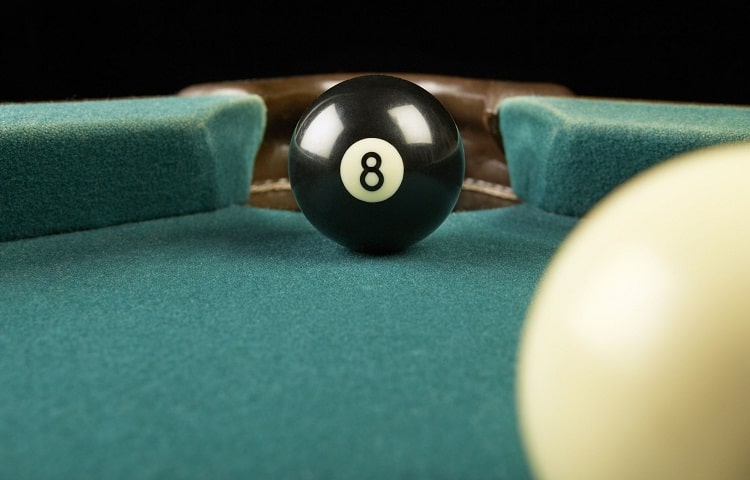
The American Poolplayers Association, aka APA, is the largest pool league in the world. It has more than 250 thousand members.
APA defines specific rules for its members. Most of the rules are the same as standard 8-Ball rules. But some of them are specific to the APA.
If you’re in a game that follows APA rules, 8-ball on break means a win for the player. But like bar rules, if you scratch when pocketing the 8 ball on the break, you lose immediately.
APA rules have strict guidelines for the break. Next to the guidelines about the 8-ball on break, there are penalties for illegal breaks.
Soft or safe breaks are not allowed under APA rules. If you purposely don’t use sufficient power on the break, you are penalized.
If the 8-ball goes in on a break, but the break is illegal or disallowed, it won’t lead to a win.
The break rules in APA are simple. Here are the specific rules when playing 8-Ball following APA rules:
- Shoot from behind the 1st string.
- If no ball is pocketed during the break, at least four balls should reach the rails.
- Break by striking the head or the second ball.
If you follow the guidelines above and sink the 8-ball on the break without a scratch, you are the winner of the game.
BCA Rules
The Billiard Congress of America (BCA) has different rules surrounding making the 8-ball on the break. Professional players see these guidelines as the primary difference between BCA and APA or Bar Rules.
BCA is a smaller league than APA, but its rules are more aligned with professional pool tournaments. Most experienced players follow BCA rules and are members of that league.
If you put the 8-ball in a pocket on the break following BCA rules, you don’t win, even if you don’t scratch.
The guideline says that the breaker has two options in this situation. You can request a re-rack or spot the 8 ball and continue the game.
Professional players believe the BCA guideline is the fairest rule for the 8-ball on break. They believe that pocketing the 8-ball in a break isn’t a skilled move and really just depends on luck.
Another possible situation in pocketing the 8-ball on break is when you scratch at the same time. In this situation, the other player has two options:
- Request a re-rack
- Spot the 8 ball and continue the game with cue ball in hand, starting from behind the 1st string
Open table is one of the results of the BCA rule surrounding the 8-ball on break.
If a player pockets the 8 ball while breaking, while not scratching or pocketing any other balls, and he or she decides to continue the game by spotting the 8 ball, it’s called an open table.
This means nothing is determined regarding the striped or solid balls. In other words, the player can choose any group to pocket after spotting the 8 ball.
There are other 8-ball rules that some bars or billiard halls may follow. UPA and USAPL are some of the most popular ones. But they are virtually identical to the APA and BCA leagues.
How To Win The Game With One Shot
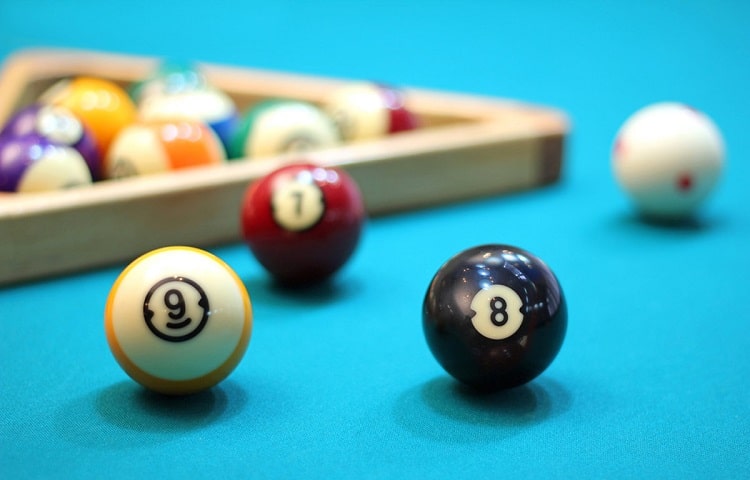
As mentioned before, pocketing the 8-ball on break in APA and bar rules means winning, unless you scratch.
So, if you’re playing in a local bar or an APA tournament, you may want to try your luck with pocketing the 8-ball on the break.
But winning a game of 8-ball on the first shot isn’t easy. Although there are some tips for increasing your chances of putting the ball in the pocket on the break, you need significant luck to pull it off.
If you’re eager to learn the techniques and increase your chances, follow the steps below:
- Put the cue ball next to one of the side rails. The best position is three to four inches from the side rail. If you’re right-handed, break from the left rail and vice versa.
- Aim for the second ball. Your body, arm, and pool stick should be in line with the second ball. If you’re breaking from the left, aim for the second ball on the left side of the rack and vice versa.
- Plan for a draw English hit. You need to avoid scratching to win the game in one shot, so shoot the cue ball so that it goes to the rails after breaking.
- Hit the second ball just shy of the head ball. With enough luck, you may pocket the 8-ball in one of the side pockets.
8-Ball On Break: Conclusion
Before playing a game of 8-Ball, you need to know which set of rules the game will follow. Talk about the rules with your opponent before the game starts.
Even leisure games may end in conflict if the rules are not clear in advance. And putting the 8 ball in the pocket on a break is one situation where differences arise.
That said, it doesn’t happen often. Some professional players may be able to do so more often than most of us, thanks to considerable training, but even then, there is still a lot of luck involved.
And it is exactly for that reason that most professional players don’t even want to sink the 8-ball on a break. There is no real skill involved.
That’s why most follow the BCA rules. According to those rules, you won’t win the game by pocketing the 8 ball on break.
But if you’re playing for fun, trying to pocket the 8-ball is a legitimate way to win the game. If you follow our tips above for where to place the cue ball, which ball to hit, and how to break, you can increase your chances of doing so.
But you’ll still need a lot of luck, too. So don’t base your entire strategy on pocketing the 8-ball on the break.
Leave a Reply